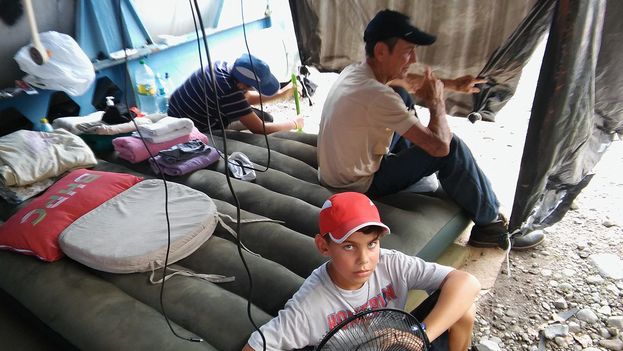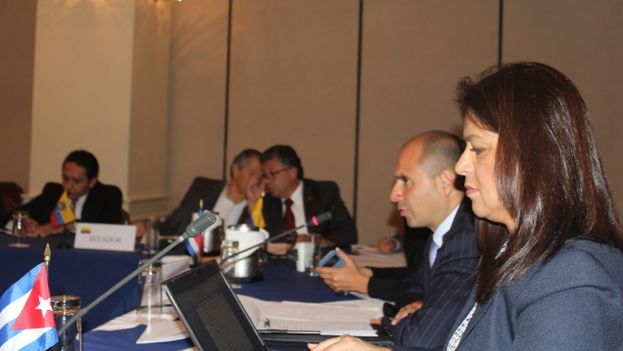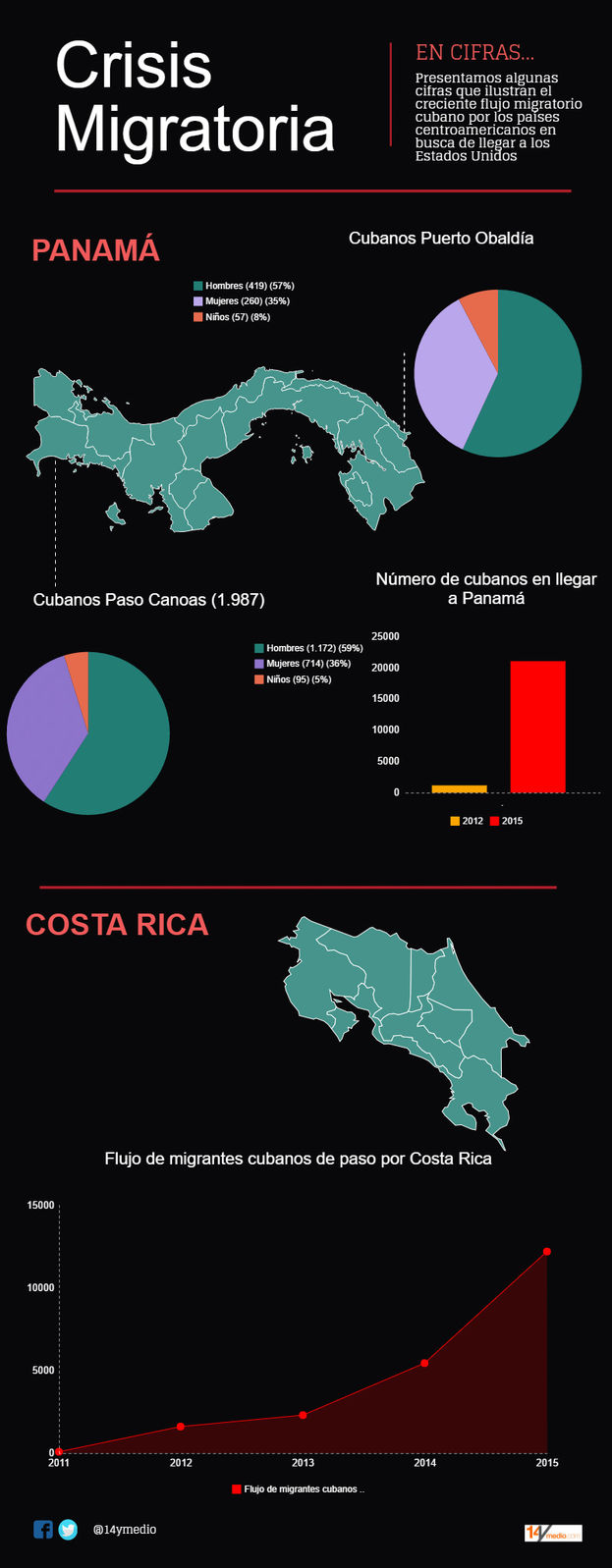
![]() 14ymedio, Mario Penton, Miami, 13 April 2016 — Mexico will not operate more “air bridges” for now, nor will Costa Rica allow more Cuban migrants in its territory, at a time when some 3,500 Cubans are flocking to the Panama isthmus trying to continue their journey to the United States. This is the scene at the climax of the summit where authorities of the countries involved in the flow of Cuban migrants – from the United States to Ecuador – are meeting.
14ymedio, Mario Penton, Miami, 13 April 2016 — Mexico will not operate more “air bridges” for now, nor will Costa Rica allow more Cuban migrants in its territory, at a time when some 3,500 Cubans are flocking to the Panama isthmus trying to continue their journey to the United States. This is the scene at the climax of the summit where authorities of the countries involved in the flow of Cuban migrants – from the United States to Ecuador – are meeting.
Also present at the meeting, convened by Costa Rica to “follow up” on the crisis of last year, are the International Organization for Migration (IOM) and the United Nations Program for Development. The notable absences were Cuba and Nicaragua, allied governments who blame the immigration policy of the United States for the current situation.
Costa Rica called the meeting “constructive” and, according to a statement from its Foreign Ministry, “it has been a meeting to exchange some ideas about how to address the issue of immigration.” The Deputy Foreign Minister, Alejandro Solano, also commented on the proposal for “a normative study to try to harmonize laws” commissioned by the IOM, with a view of taking a regional approach to the practices in each country.
Moreover, it has emerged that Ecuador and Mexico are going to tighten measures to prevent the flow of Cubans. In the case of the Andean country, the cost of a visa will be increased from $100 to $400, one of the most expensive in the world, while the Aztec country has not yet clarified how it will stem the flow of Cubans to the United States. Still to be confirmed is whether Cuban migrants who reach Tapachula, Mexico will be granted safe conduct. Costa Rica has reaffirmed its position from recent weeks and according to the deputy minister will require a visa from all migrants seeking to cross its territory.

While the meeting was taking place in the Costa Rican capital, Nicaragua mobilized riot and military police near the border post at Teblillas, Costa Rica in response to an eventual furtive passage of migrants from Alajuela through this town. Also at the same time, Roberto Vega Lopez, a Cuban citizen, was captured in Colombia; he has trafficked people from the island in a complicated route that includes Guyana and the Brazilian and Colombian Amazon jungle. At the time of his arrest he was leading 15 Cubans through this dangerous route to Panama.
The conclusions of the meeting in San Jose fell like a bucket of cold water on the camps of Cuban migrants in Panama. According to Yunier Leiva, many of them had lit candles during the day in hopes of a “miracle,” that would resolve their difficult stay there. “In the end what they did is support the Cuban government and lock up even more Cubans in the floating prison that is Cuba,” he commented with a heavy heart.
For Silvio Enrique Campos, the alternative left to them by the foreign ministers was to “stick with the coyotes.” In a conversation with 14ymedio the migrant said that given “the lack of answers or solutions, Cubans in Paso Canoas are overcome by desperation.” Despite the difficulty of the moment, he calls on his compatriots not to endanger their lives because “the walls will fall again.”
In the absence of solutions to their problematic situation the migrants have decided to begin night vigils so that the international community can see the conditions they are living in. On Cuban who asked not to be identified for fear of reprisals, comments that every day several groups of Cubans are leaving Panama for the United States, crossing through the forests along the Costa Rican border.
He says, The only thing the authorities have done by not solving our passage in an orderly manner is to feed the bands of coyotes they are claiming to fight.” He also said that the human traffickers are now charging more for their services. “A trip that cost some $3,000 dollars has now been converted into a much more dangerous and expensive journey and last week someone wanted to charge me $7,000.”
From Ecuador, the Cuban National Alliance also released a note which encourages Cuban who have decided to emigrate not to get discouraged. “We knew from the beginning that it wasn’t going to be an easy task,” it says, and at the same time it calls on its members to “continue appealing to the reason and humanity of the governments.”
At this point it is not yet known what will happen to the thousands of Cuban migrants who are stranded in Central America. In a report presented by the Panamanian immigration authorities it stated that the number of Cubans has already reached 3,500 people, of which more than 150 are children.

